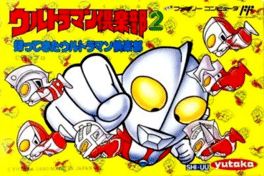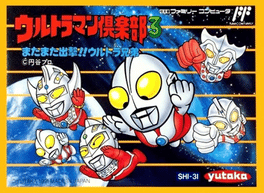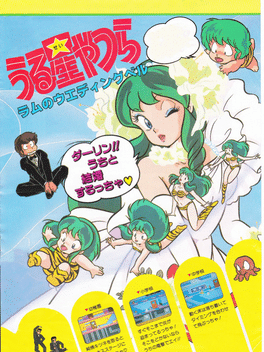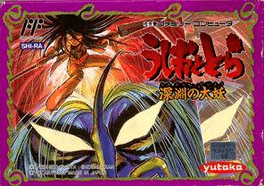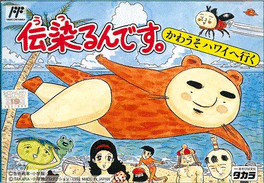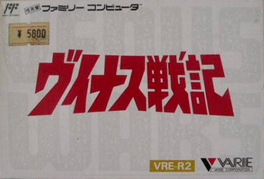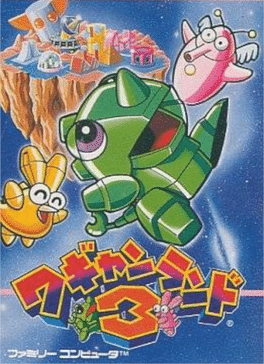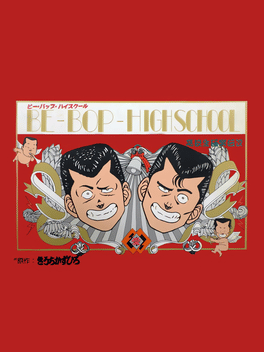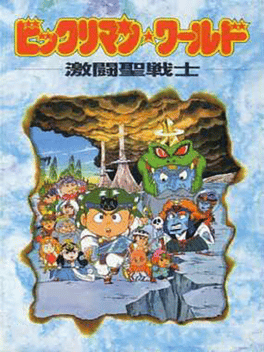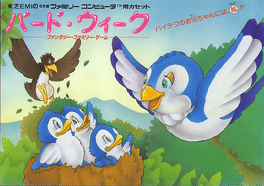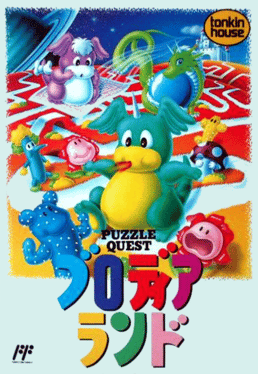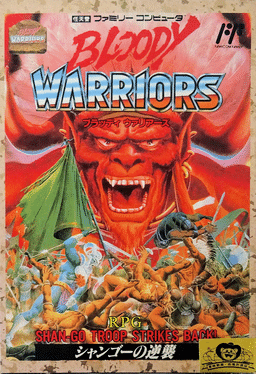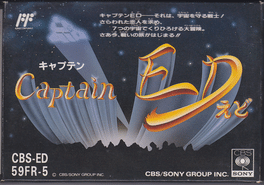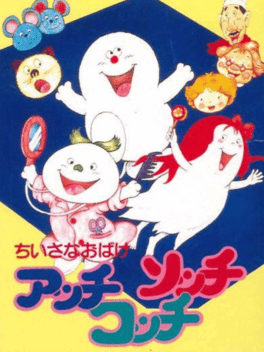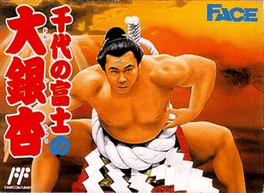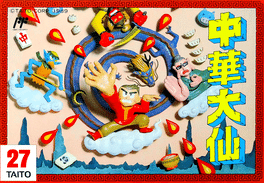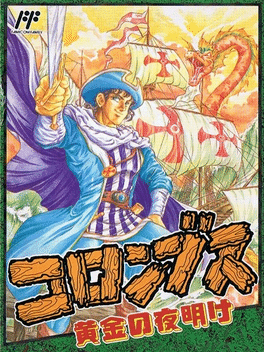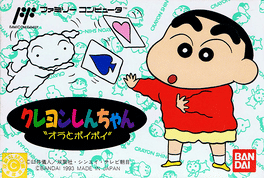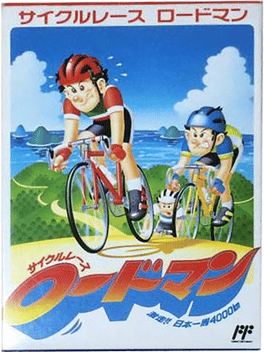Most Popular Family Computer Games - Page 39
-
Ultraman Club 2: Kaette Kita Ultraman Club
1990
Ultraman Club 2: Kaette Kita Ultraman Club is a Role-Playing game, developed by Interlink and published by Bandai, which was released in Japan in 1990. -
Ultraman Club 3: Mata Mata Shiyutsugeki!! Ultra Kyoudai
1992
Ultraman Club 3: Mata Mata Shiyutsugeki!! Ultra Kyoudai is a Role-Playing game, published by Yutaka, which was released in Japan in 1991. -
Urusei Yatsura: Lum no Wedding Bell
1986
In Urusei Yatsura: Lum's Wedding Bell, the player controls Lum as she grows up and has to avoid alien invaders while trying to reach her rescue UFO. The game's storyline involves a severe earthquake striking in Tomobiki-cho (the town where the Urusei Yatsura series takes place) and tearing the space-time continuum, forcing Lum to have to travel forward through time in order to be reunited with her "darling" Ataru Moroboshi. The player starts out at infant school, then works her way to elementary school, junior high school, high school, college, and finally the player gets married to a bridegroom (Ataru) in a white tie outfit. After that, the game starts over again. The game has never been released outside Japan. -
Ushio to Tora: Shinen no Daiyou
1993
Ushio to Tora: Shinen no Daiyou is a Role-Playing game, developed by Pixel and published by Yutaka, which was released in Japan in 1993. -
Utsurun Desu: Kawauso Hawaii he Iku!!!
1992
While ostensibly a traditional platform game in which the player controls Kawauso-kun, the game has gained renown for being one of the earliest titles to attempt to break away from the video game conventions of the time. Among other convention-flouting novelties that the game offers are a series of fake title screens that the player must pass through at the start, and the allowance of the main character to traverse the background at times to bypass pits of spikes that otherwise appear impossible to cross. In addition, the character's attack requires the player to hold down the attack button as the game cycles through the possible special moves with the more powerful attacks only highlighted for a short period of time. -
Venus Senki
1989
Venus Senki
1989
Venus Senki is a Strategy game, developed by Human Entertainment and published by Varie, which was released in Japan in 1989. -
Wagyan Land 3
1992
Wagyan Land 3
1992
Wagyan Land 3 is an Action game, developed and published by Namco, which was released in Japan in 1992. -
Be-Bop High School: Koukousei Gokuraku Densetsu
1988
Be-Bop High School: Koukousei Gokuraku Densetsu is an Adventure game, developed and published by Data East, which was released in Japan in 1988. -
The Best Play Baseball Special
1992
Best Play Pro Yakyuu Special is a Sports game, developed and published by ASCII Entertainment, which was released in Japan in 1992. -
Bikkuriman World: Gekitou Sei Senshi
1990
Bikkuriman World: Gekitou Sei Senshi is a Role-Playing game, developed by Atlus and published by Hudson, which was released in Japan in 1990. -
Bird Week
1986
Bird Week
1986
The player plays as a bird and can either play the normal game or the single level practice game. The player must feed butterflies to the baby birds so that they can grow big and eventually leave the nest. It is suggested that they eventually become the "new mother birds" that take care of their offspring in the subsequent levels. Finishing all 999 levels of Bird Week actually results in the beginning of an endless loop instead that ends when the players loses all of his lives. Each level represents a season in the ecosystem of a bird. The game starts out in early spring. As the virtual year progresses, the season evolves into summer and eventually into autumn. After autumn, the game repeats itself by portraying the following spring. If the proper amount of butterflies are not fed to the babies, then the babies end up starving to death. The player will automatically lose a life if any of the baby birds die. In addition to this, the player also loses a life when a predator catches the player trying to deliver butte -
Blodia Land
1990
Blodia Land
1990
Blodia Land is a Puzzle game, developed by TOSE and published by Tonkin House, which was released in Japan in 1990. -
Bloody Warriors: Shan-Go Troop Strikes Back!
1990
You are a young man from an ancient village, which suffers from attacks by a vicious monster. You are assigned to find the monster's lair and to defeat it. However, upon your return to the village you find out some people were abducted by the imperial troops. Now you have to find out the Empries's true motives and to solve a grand mystery. -
Captain Ed
1989
Captain Ed
1989
Captain Ed is an Action game, developed by Graphic Research and published by CBS Sony Group, which was released in Japan in 1989. -
Chiisana Obake: Acchi Socchi Kocchi
1993
Chiisana Obake: Acchi Socchi Kocchi is a Puzzle game, developed by Atlus and published by Vap, which was released in Japan in 1992. -
Chiyonofuji no Ooichou
1991
The player is able to customize their own sumo wrestler by giving him a unique appearance. Characters have a chibi appearance to them. Items that can be added include are the eyes, ears, mouth, and nose. Once the customized wrestler is created, he must fight against other sumo wrestlers for the title of Yokozuna. There are two bars for each player that allow the player to fend off and deliver attacks. A tutorial mode is added that allows players to practice their moves against an AI opponent that is lower in intellect that the actual game's AI. -
Chuuka Taisen
1989
Chuuka Taisen
1989
The player controls Mike Chen floating on a cloud, maneuvering around the screen and shooting balls of energy at flying enemies. Powerups can be collected for stronger and faster firepower. Some parts of the game stage have doors that give the player the opportunity to buy special bomb types with collectible credits. Each stage has its own mini-boss and big boss. Throughout the stages, the player restarts at certain checkpoints after losing a life. -
Columbus: Ougon no Yoake
1992
A nautical strategic RPG hybrid action in the vein of Uncharted Waters. You follow the life of Christopher Columbus as he goes from rookie captain to his landing in America. After a few tutorial missions, you get turned loose on an open world to build fame for yourself by doing quests, slaying rare monsters holed up in dungeon areas, etc., until a King of a prominent country can be convinced to support your expedition to the New World. -
Crayon Shin-Chan: Ora to Poi Poi
1993
The game is a simple card game with a Tetris element. The layout is similar to a Tennis court with both players on either sides defending their goal, while stacks of cards are positioned in the center. Players must move Shin up and down sliding cards, in two's, to the center pile matching up symbols and push each stack back to the opponent's side in an attempt to over take their goal. -
Cycle Race: Road Man
1989
Cycle Race: Road Man
1989
It is the player's ultimate objective to make it all the way around Japan. If the player ends up completely damaging the bicycle, running out of energy, or falling behind a certain ranking, then he or she will automatically lose the race. Players can choose a representative from either Team USA, Team Japan, Team France, or Team Italy. As long as the player has at least one spare bicycle in the inventory, games will never end on a completely damaged bicycle. Passwords are used to save the game. The race is 4,000 kilometers long (2485.5 miles). Players must traverse the countryside that separates major Japanese cities along the coastline during the course of these 4,000 kilometres. Interesting scenery includes forests and cattle farms. Players are always given the exact altitude of each section; they are also shown how far in a stage the player has to advance in order to reach the finish line.
